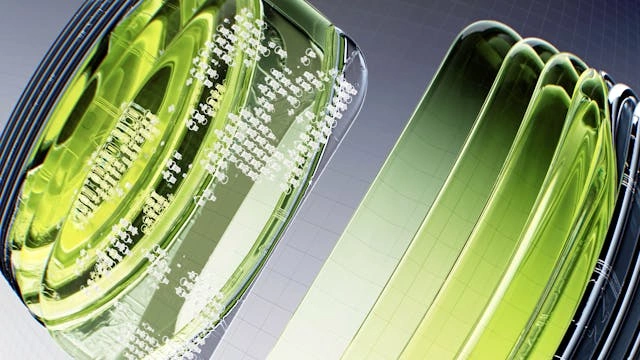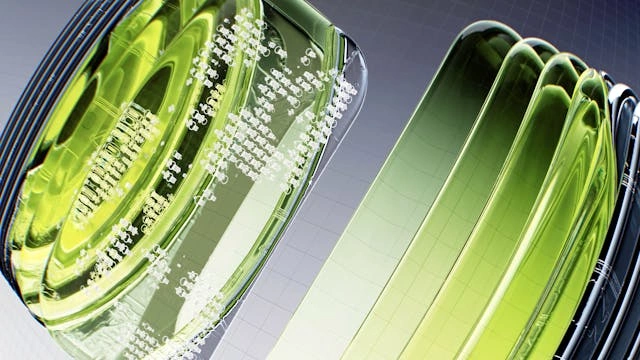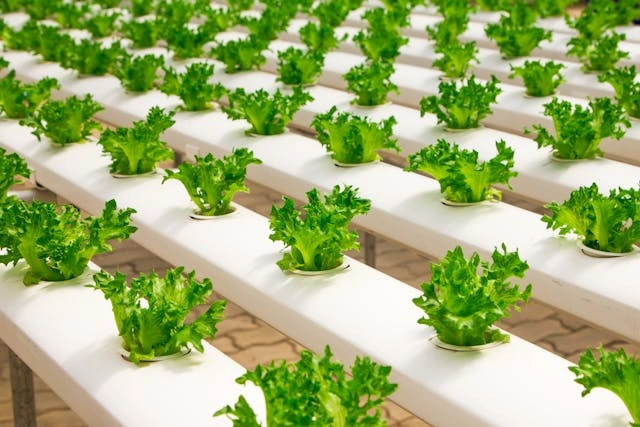GREEN TECH: PAVING THE ROAD TO SUSTAINABILITY
In recent decades, growing concerns about climate change, the depletion of natural resources, and environmental degradation have prompted the global community to reimagine how industries operate, particularly in energy production, agriculture, and manufacturing. The need for sustainable practices has never been more urgent, and technologies in the green tech sector are emerging as critical players in tackling these challenges.
SUSTAINABILITY AND GREEN TECH: PAVING THE WAY FOR A SUSTAINABLE FUTURE

Green technologies, often referred to as sustainability technologies, aim to address environmental issues, reduce carbon footprints, and promote the use of renewable resources. As climate change accelerates, renewable energy, carbon capture technologies, and sustainable agriculture will become central pillars of our collective efforts to build a greener, more sustainable future.
This article explores how these innovative technologies in green tech—including solar and wind energy, carbon capture and storage, and sustainable farming practices—are shaping industries and addressing environmental concerns. We will discuss the importance of these technologies, how they are transforming industries, and what challenges and opportunities lie ahead.
The Growing Need for Sustainability
Climate change is one of the most pressing global challenges facing humanity. According to the Intergovernmental Panel on Climate Change (IPCC), global temperatures are projected to rise significantly over the next century unless immediate and substantial action is taken. The effects of this rise include more frequent and severe heatwaves, storms, droughts, and rising sea levels, all of which threaten ecosystems, biodiversity, and human communities.
To mitigate these effects, governments, industries, and individuals must take collective action to reduce carbon emissions, transition to renewable energy sources, and adopt sustainable practices across various sectors. The shift to green technologies is essential in this transition, offering innovative solutions that can reduce greenhouse gas emissions and help us adapt to a changing climate.
Renewable Energy: The Cornerstone of Green Tech
The transition from fossil fuels to renewable energy sources such as solar, wind, geothermal, and hydropower is perhaps the most critical and impactful change needed to combat climate change. Fossil fuel-based energy sources are the largest contributors to greenhouse gas emissions, and shifting to renewable sources is key to reducing our carbon footprint.

1.1 Solar Power
Solar energy harnesses the power of the sun and converts it into electricity using photovoltaic (PV) cells. Solar power is one of the most abundant and sustainable energy sources available, making it a central focus in the green tech sector.
- Technological Advancements: Over the past decade, significant advancements in solar technology have led to a dramatic reduction in the cost of solar panels, making them more accessible to homeowners, businesses, and large-scale utilities. Concentrated solar power (CSP) technologies have also emerged, where mirrors or lenses concentrate sunlight to generate electricity through heat.
- Solar Storage Solutions: One of the challenges of solar energy is its intermittent nature—it can only be generated when the sun is shining. However, innovations in battery storage technologies, such as lithium-ion batteries and solid-state batteries, are helping to store excess solar energy for use at night or during cloudy days, making solar energy more reliable.
- Integration with Smart Grids: Solar power can be integrated with smart grids to allow for more efficient energy distribution. Smart grids use real-time data and communication technologies to optimize the flow of electricity, ensuring that power generated by solar installations is used effectively.
1.2 Wind Power
Wind energy is another renewable resource that has gained significant momentum. Wind turbines convert the kinetic energy of wind into electricity, and advancements in turbine design and efficiency have made wind power one of the most cost-effective forms of renewable energy.
- Offshore Wind Farms: One of the most exciting developments in wind energy is the growth of offshore wind farms. Located in bodies of water like oceans and seas, offshore turbines benefit from stronger and more consistent winds compared to land-based turbines. This makes them a key part of many countries’ strategies to meet renewable energy goals.
- Wind Storage and Grid Integration: Like solar power, wind energy is variable, but advanced energy storage solutions and smart grid technologies are helping to mitigate the intermittency of wind power. Grid-scale storage solutions, such as pumped hydro storage and compressed air energy storage, can store excess energy for later use.
1.3 Geothermal and Hydropower
While solar and wind power are the most widely known, geothermal and hydropower are also important contributors to the renewable energy landscape.
- Geothermal Energy: Geothermal power taps into the heat stored beneath the Earth’s surface. This heat is used to produce electricity or to directly heat buildings. Geothermal energy is a stable and sustainable resource, as the Earth’s internal heat is virtually inexhaustible.
- Hydropower: Hydropower uses the energy of flowing water to generate electricity. Although large-scale hydropower projects (dams) can have significant environmental impacts, small-scale hydropower and run-of-river systems offer more sustainable alternatives.
Carbon Capture and Storage: Reducing Emissions
While the transition to renewable energy is crucial, it is also necessary to address existing carbon emissions. Carbon capture and storage (CCS) technologies have emerged as a solution to capture CO2 emissions from power plants, industrial processes, and even directly from the atmosphere.
2.1 How CCS Works
Carbon capture involves trapping CO2 emissions before they can enter the atmosphere, while carbon storage involves transporting the captured CO2 and storing it underground in deep geological formations. CCS can be implemented at various stages in the energy production process:
- Post-combustion capture: This process captures CO2 from flue gases after fossil fuels have been burned to produce energy.
- Pre-combustion capture: This process captures CO2 before fossil fuels are burned, such as in coal gasification or natural gas reforming.
- Direct Air Capture (DAC): This technology directly removes CO2 from the atmosphere, offering the potential to reverse some of the damage caused by decades of emissions.
2.2 The Potential of Carbon Capture
CCS is seen as an essential tool in reaching net-zero emissions goals, particularly for industries that are difficult to decarbonize, such as cement, steel, and chemicals. It can also be used to create carbon-neutral fuels by combining captured CO2 with hydrogen to produce synthetic fuels.
Despite its promise, carbon capture technology is still in the early stages of deployment, and significant investments in infrastructure, research, and development are required to scale it to a level that can effectively reduce global emissions.
2.3 Challenges and Opportunities
The challenge with CCS lies in the high costs associated with capturing, transporting, and storing CO2. Additionally, public perception and regulatory hurdles can slow down the development of CCS projects. However, CCS also presents opportunities for innovation, creating new industries around carbon storage and enabling the production of carbon-neutral products.
Sustainable Agriculture: Transforming Food Systems
Agriculture is another sector that plays a critical role in sustainability. Agriculture contributes significantly to greenhouse gas emissions, deforestation, and the depletion of natural resources. Sustainable agricultural practices, combined with green technologies, can help reduce these impacts and create a more resilient food system.
3.1 Precision Agriculture
One of the most promising innovations in sustainable agriculture is precision agriculture, which uses technology to monitor and manage agricultural operations in a highly targeted way. Through the use of sensors, drones, satellite imagery, and IoT devices, precision agriculture enables farmers to optimize the use of water, fertilizers, and pesticides, reducing waste and minimizing environmental impact.
- Water Management: Smart irrigation systems can monitor soil moisture levels and weather conditions to optimize water usage, preventing over-irrigation and reducing water consumption.
- Soil Health: Sensors and data analytics can monitor soil health, enabling farmers to implement targeted interventions that improve soil fertility and reduce the need for synthetic fertilizers.
3.2 Regenerative Agriculture
Another approach gaining traction is regenerative agriculture, which focuses on rebuilding soil health, enhancing biodiversity, and sequestering carbon in the soil. Practices like cover cropping, no-till farming, and rotational grazing can improve soil structure and increase its ability to absorb carbon from the atmosphere.
- Carbon Sequestration: Regenerative agriculture has the potential to turn agriculture into a net carbon sink. By increasing soil organic matter and promoting healthy soil ecosystems, regenerative practices can capture significant amounts of CO2 and help mitigate climate change.
3.3 Vertical and Urban Farming
As the global population continues to grow, urban farming and vertical farming are emerging as sustainable alternatives to traditional agriculture. These methods allow for food production in urban areas, reducing the need for long supply chains and decreasing the environmental impact of food transportation.
- Vertical Farms: Vertical farms grow crops in stacked layers, often in controlled indoor environments. These farms use less land, water, and energy compared to traditional farming methods, and they can produce food year-round regardless of weather conditions.
- Hydroponics and Aquaponics: These soil-free farming methods use nutrient-rich water to grow plants, reducing water usage and minimizing the need for chemical pesticides.

Conclusion: The Road Ahead for Sustainability and Green TechAs the global community faces the escalating challenges of climate change, green technologies will become more critical than ever. The transition to renewable energy, the advancement of carbon capture and storage technologies, and the adoption of sustainable agricultural practices will be key components of a more sustainable future. However, this transition will require continued investment, research, and policy support.
Green tech is not just a response to climate change; it is an opportunity to reshape the global economy, create jobs, and improve the quality of life for people around the world. As we continue to develop and scale these technologies, there is immense potential to build a future that balances economic growth with environmental sustainability. By embracing these innovations, we can create a world that is both prosperous and planet-friendly, ensuring that future generations inherit a healthier and more sustainable planet.









